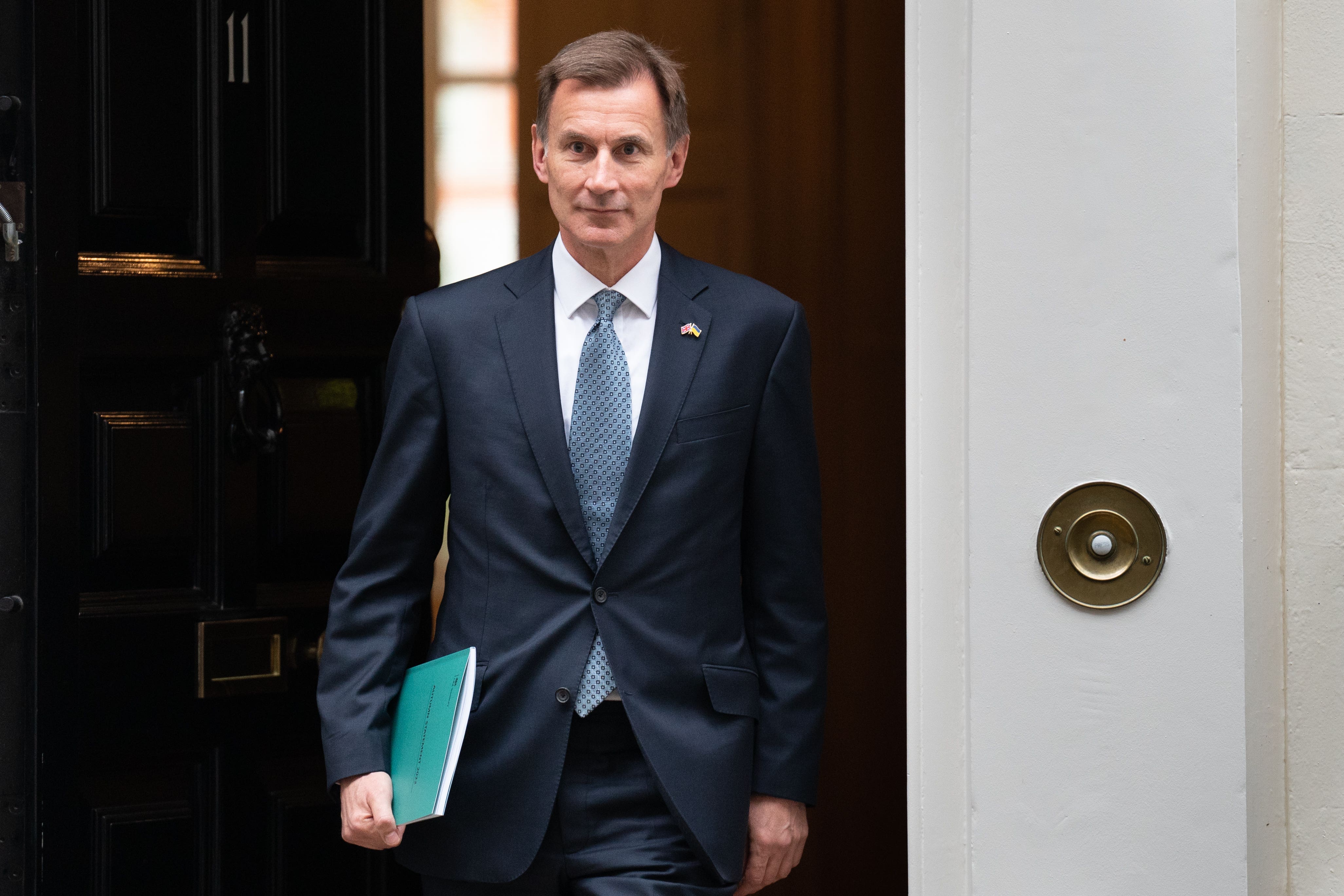The choices Jeremy Hunt faces over the Budget
The chancellor seems set on cutting taxes next year – in a pre-election giveaway – rather than now, argues Sean O’Grady


The respected Institute for Fiscal Studies (IFS) has produced its latest outlook for the public finances, ahead of the Budget on 15 March. There are good and bad omens for the chancellor, Jeremy Hunt – and plenty of tough choices.
Aren’t the public finances doing unexpectedly well?
Yes. At the moment, public sector borrowing is about £30bn below where the Office for Budget Responsibility (OBR) said it would be when they last made a forecast, back in November. At that point, in the immediate aftermath of the disastrous Liz Truss-Kwasi Kwarteng plans for the economy, things were looking especially grim, with higher interest rates seemingly nailed on, and a protracted recession. Since then, interest rates have moderated in response to the change in stance of Sunak and Hunt, inflation is set to fall faster than anticipated, with energy costs moderating, and the cost of subsidising household bills looks to be subsiding more readily as well. The Bank of England has also confirmed its view that the recession will be shallower and shorter than previously thought.
So could Jeremy Hunt cut taxes next month?
Yes and no. The scope of tax cuts, or big increases in public spending, is limited because quite a lot of the improvement in tax revenues and lower spending on keeping gas and electric bills down is a one-off, temporary effect. To cut tax rates normally means planning to keep them lower for years to come, rather than as a one-off reduction.
There is, though, considerable pressure among Conservative MPs being placed on Hunt to cancel the projected hike in corporation tax rates. In their view, cutting tax in business is essential to boosting entrepreneurship and growth, and is one way Brexit freedoms can be taken advantage of. Ministers argue that the headline rate of corporation tax isn’t the main driver of new investment, and targeted tax reliefs work much better. Either way, Brexit and the obstacles to full access to the EU single market may prove to be a more powerful factor than adjusting business taxation.
More broadly, and politically, Hunt and Sunak seem set on cutting taxes next year, in a pre-election giveaway, rather than now because the voters might forget them by the time polling day comes around in 2024. It’s a crude but very traditional way to try to win a general election.
What about a pay rise for nurses and other public sector workers?
Again, the chancellor could use the “windfall” to give nurses and others a one-off bonus, but a more permanent uplift in pay would require another tax rise. The IFS suggests that if the coming freeze in fuel duty in 2023-24 was cancelled, now that petrol prices have fallen somewhat, that extra revenue of about £6bn could be used to increase the pay offer to nurses from 3.5 per cent to 5.5 per cent, matching the increase in the Consumer Price Index projected for next year. With such options becoming available to the government, it’s no huge surprise that Steve Barclay, the health secretary, has invited the Royal College of Nursing in for pay talks.
What can we expect in the Budget?
The main outlines of fiscal policy were set out when Hunt reversed almost everything in the Kwarteng Budget last year and went on to present his own Budget last November. The Treasury has let it be known that this year’s March Budget is to be a “slimmed down” affair. For the sake of reinforcing the image of stability and calm, the Budget will have a few surprises. Some pockets of money will probably be highlighted to send out messages about the Sunak administration’s priorities, such as in science and on speeding up asylum claims.
What’s the longer-term outlook?
Fairly poor. The IFS points out that the Bank of England now forecasts “truly dismal” trend growth of below 1 per cent per year in the longer term. This would be only about a third of the 50-year pre-2008 average. So, for example, even with the extra cash provided in the autumn statement, NHS England funding will grow more slowly over the parliament than was planned pre-Covid. Public sector pay has already suffered the largest year-on-year (relative) fall compared to private sector pay since comparable data began in the early 1990s. The current plan is for day-to-day public service funding to grow by 1 per cent per year in real terms after 2025. That is well below the 2.8 per cent annual average seen over this parliament, and below the 1.8 per cent average seen over the past 40 years.
Politically, the UK’s sluggish growth means that either party will find it tremendously difficult to improve wages, public services and living standards for many years. For Keir Starmer and Rachel Reeves, it strongly indicates that their aim to make the UK the fastest growing economy among the G7 advanced Western nations is overambitious, if not basically doomed.
Join our commenting forum
Join thought-provoking conversations, follow other Independent readers and see their replies
Comments